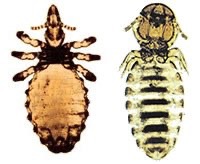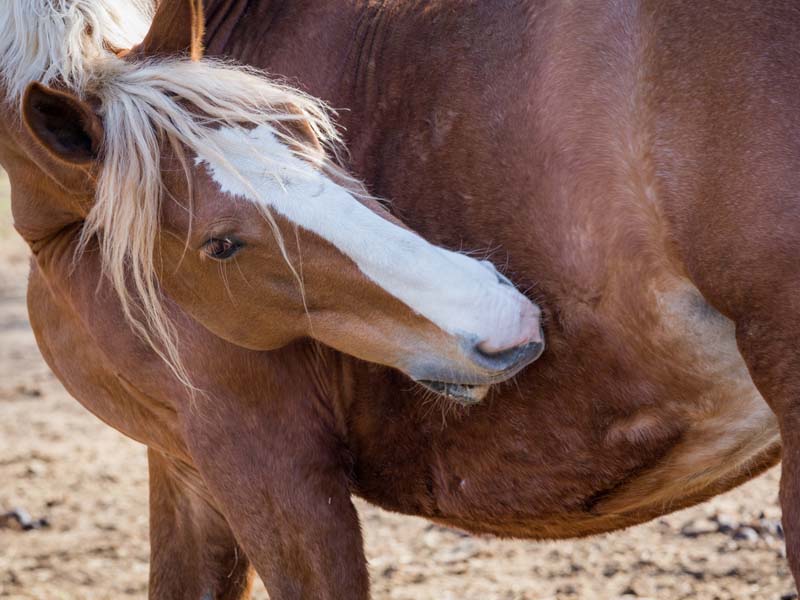Lice are small, wingless insects, which can infest a large range of animals. They are however host specific so transfer between species (I.e. horses to humans or vice versa) doesn’t occur. They do however, spread easily between horses. There are two species that exist in Australia; Damalinia (Werneckiella or Bovicola) equi is a biting louse that grasps onto a host’s hair and eats skin debris and secretions. Haematopinus asini is a blood-sucking louse that similarly attaches to the host’s hair and uses its mouthparts to pierce the skin and drink blood.
The clinical signs associated with lice can vary in severity and may be limited to skin problems. Clinical signs can include the following:
- Scratching, rubbing, and biting
- Stress due to restlessness and irritation
- Hair loss
- Skin wounds and raw areas (from self-trauma)
- A rough coat and an unthrifty appearance
If a horse is heavily infested with blood-sucking lice, the parasites can drink enough blood to cause an anaemia. In some instances horses can also become very stressed and annoyed by lice, leading to weight loss and contributing to an unthrifty, scruffy appearance.
Horses most commonly get lice from being in contact with other horses that are infested. Sick, old, or debilitated horses are also more likely to become infested. Horses in a crowded environment can very easily spread the parasites to each other. Lice can also be transmitted by fomites—objects such as combs, brushes, or blankets that, if shared, can help spread lice from horse to horse.
Lice infestations in horses are more common in the winter and spring. Also, longer hair during the cold weather gives lice an excellent place to hide, allowing them to thrive and sometimes go undetected.
The good news is that lice can only live in the environment for a very short time. Therefore, given transmission generally occurs from direct contact between horses this allows an opportunity to control/eradicate the parasite from your property. The spring and summer months are a great time to attempt to treat or eradicate lice from your horses as lice become more exposed to the elements with the shedding of hair and warmer weather!
How do I treat lice infestation?
Given lice cannot live in the environment for very long, treatment of affected or susceptible animals is the main way to go about getting rid of this annoying little parasite!
- Separating or isolating affected animals is the first step.
- Ensuring that they are treated with an appropriate treatment! (Speak to us about which treatments are available and appropriate), and
- Don’t forget though to clean all gear, brushes, and feed buckets to minimise the chance of spread between animals.

Figure 1: The two forms of lice common in Australia: (L-R) Haematopinus asini (Sucking lice) and Damalinia equi Biting lice).

